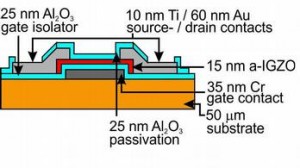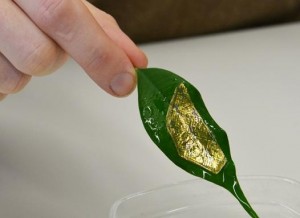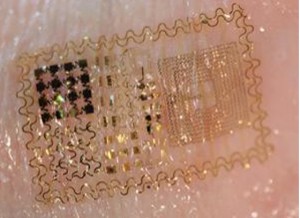
Have you ever tried bending a computer’s motherboard? Chances are, it never saw another functional day. Imagine trying to bend a material one-fiftieth of the thickness of a typical sheet of paper (one micrometer). Probably even in your imagination, the circuit board has already snapped in half. This fragility is a major source of frustration in designing electronics for biological applications, as very few perfectly and consistently flat surfaces are found on living organisms. However, recent research by the Wearable Computing Group at the Electronics Laboratory in Switzerland has developed an effective method of fabricating ultrathin electronics that can be used in biological situations.
Indeed, wafer-scale electronics, especially transparent film transistors (TFTs), have been highly researched for several years, with the primary goal of increasing their flexibility and durability for biological usage. The general protocol for fabricating miniature-sized electronics has mainly involved two steps: fabrication of the electronics on a flexible platform such as polymer or foil atop a supporting substrate followed by the removal of the substrate.

The new method, published in Nature Communications, offers several chemical-process-based improvements on previous techniques. The design of the fabrication structure, which is pivotal to retaining full functionality in a one micrometer thick transistor, consists of the following: a non-soluble polymer substrate film, two polymer layers, and a silicon foil. With the silicon foil as the base, the two polymers are selected based on physical properties like solubility or adhesion and spin-coated to create thin layers of polymer on the foil. Next, the non-soluble substrate polymer is heated until a thin film of the material condenses on the soluble polymer layers.
After all the layers are coated, the silicon foil can be lifted off and the polymer substrate film attached to any surface via the adhesive polymer layer. This “liftoff” procedure, compared to other methods, allows the film to be gently removed and placed onto another surface, preserving the function of thin electronics. According to Yale Professor of Electrical Engineering Mark Reed, “A lot of people directly put electronics on a piece of plastic… this is now using a long known technique of lifting off, but being able to do that while still maintaining functionality is a very nice technological demonstration showing the advancement to the next level.”

Possible applications of flexible electronics range from medical to consumer products. Not only can TFTs be used for external monitoring, but if coated with some resistive substance, they could also be implanted for internal measurements. For the average consumer, life could become even more convenient if flexible TVs or tablets are developed. As Reed asserted, “We’ve all seen the kind of science fiction where people take out a newspaper and the display continually changes. All you need is some decent computing power and this discovery would supply that. I believe this can definitely be an initial application, opening the path to many more uses.”
